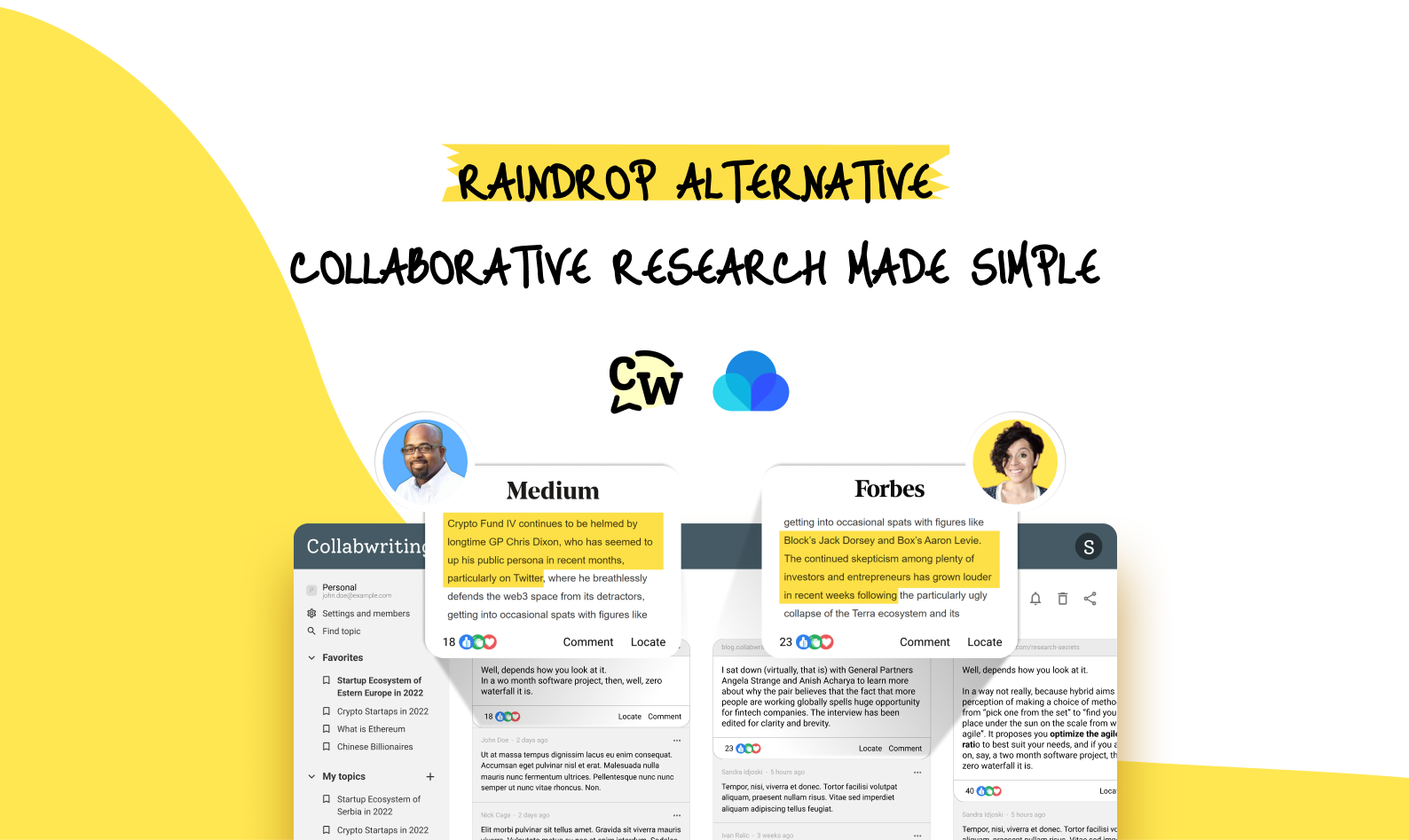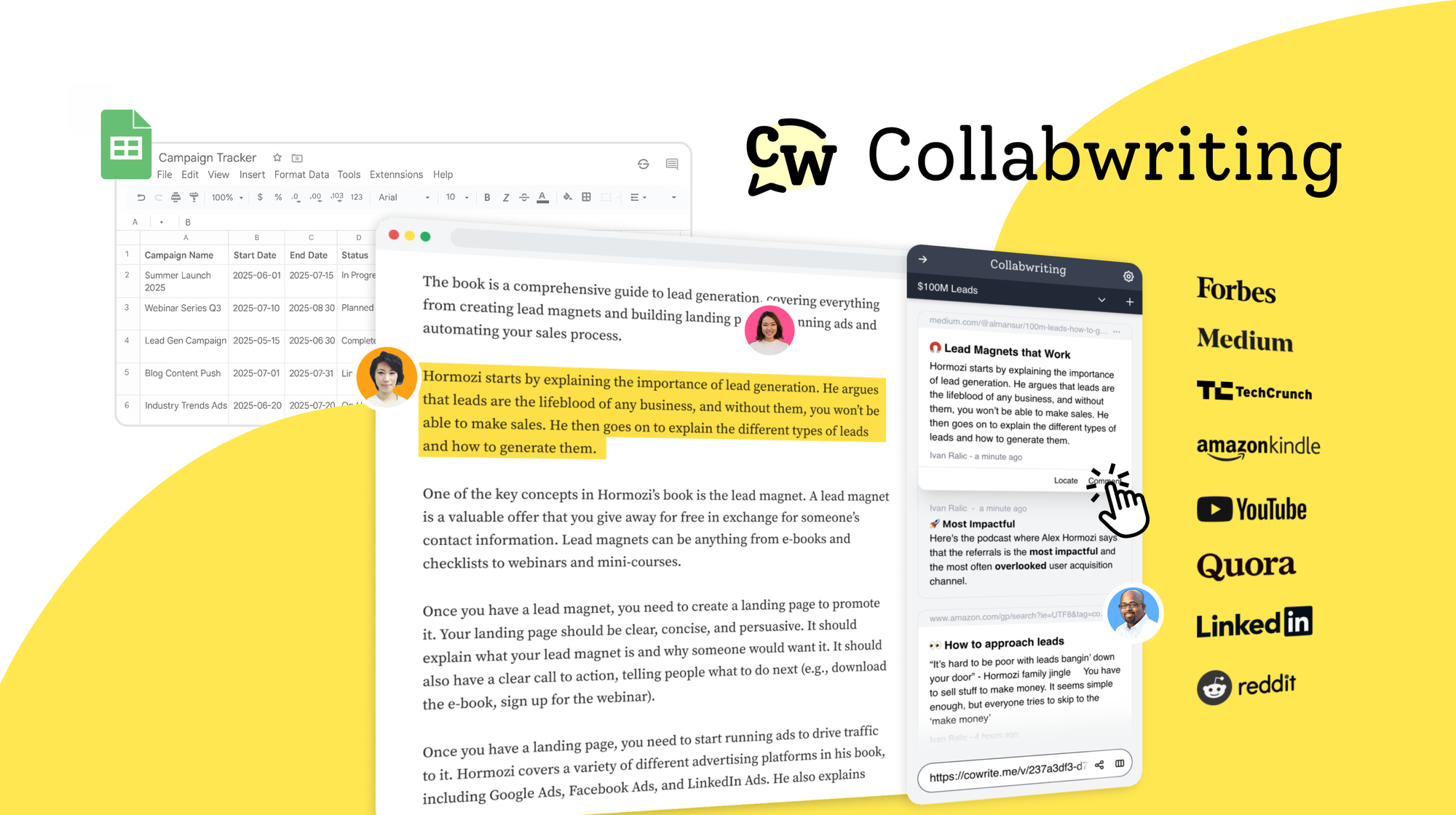How content marketers got here
No one planned to organize research in a spreadsheet. It just sort of... happened.
Somewhere along the way, they became a default solution.
Your team uses them. Clients are used to them. Everyone knows how to scroll, sort, and drop in a link. It’s the path of least resistance.
You’ve probably even thought, "Why switch to something else and make things harder for everyone?"
You needed a quick way to track sources, and Google Sheets was right there.
✅ Easy
✅ Flexible
✅ Good enough
Until it wasn’t.
Now you’re stuck with a mess of links, scattered notes, broken formatting, and tabs that are hard to make sense of.
And when you're deep in campaign prep, you realize something: spreadsheets are killing your momentum.
The real problem with using Google Sheets for collaborative research
Don’t get me wrong: Spreadsheets are great for certain tasks - like managing budgets, tracking expenses, or handling simple lists - things where such structure and formulas rule.
But even if you don’t want to admit it, spreadsheets aren’t built for what content marketers really do: collecting ideas, collaborating, saving useful insights, and keeping track of the context behind each one.
Not to mention how much time you spend manually cleaning up each column, fixing formatting, and trying to make sense of endless rows.
Let’s break down some of the specific problems you’ll face when using spreadsheets for your content research and organization:
Collecting information is slow and painful
Every content marketer knows the drill:
Find an article or insight ➜ Copy the URL ➜ Paste the title ➜ Add a note
But it gets even messier when you’re working on internal linking. You have to copy the anchor text, paste it into one column, then the blog title into another, then the URL.
Do that 20–30 times and you’re stuck in a never-ending copy-paste loop. It takes forever, and it’s easy to miss something.
And the worst part?
When you want to share that sheet with someone - or a client sends you theirs - you open it and have no idea where to start.
Which tab matters? What’s the most up-to-date info?
You waste hours trying to untangle it all before you can actually use any of it.
You lose the context
A week later, you scroll through the spreadsheet and ask yourself:
“Why did I save this again?”
There’s a link. Maybe a title. Maybe a vague comment like “interesting angle”.
But the spark that made you save it? Gone.
Without context - the quote, the insight, the idea it triggered - it’s just noise. You can’t remember what felt important, and now you either ignore it… or waste time rereading the entire article hoping it’ll come back to you.
That aha moment you had?
It’s buried.
Teams doesn’t scale
It always starts small. One tab. A few links. No big deal.
But then the research grows.
You add more tabs. Create new sheets for different topics.
Everyone on the team starts using their own formatting - different colors, filters, and comments in random places. Before you know it, you're swimming in a spreadsheet jungle.
You know the info is in there somewhere... but finding it? That’s another story. You waste time scrolling, searching, second-guessing yourself.
What started as a quick system becomes a cluttered mess - because spreadsheets aren’t built to scale with your research.
They just multiply the chaos.
Collaboration is clunky
You share the spreadsheet with a teammate or a client.
Then you write a message to explain what to read, where to find it, and why it matters. Then you wait for their feedback. Then you follow up again.
The whole thing feels like passing around a giant, outdated document.
It’s slow. It’s manual. And let’s be honest: no one’s excited to open yet another spreadsheet.
Even "organized" systems aren't enough
Some content marketers try to solve this with internal link matrices. A spreadsheet with clusters, suggested anchors, and buyer journey stages.
Smart in theory. But in practice?
- You’re still switching tabs to find what you need
- You’re still explaining context outside the sheet
- Writers still end up overwhelmed by too much structure and not enough clarity
It’s just structured chaos.
I once worked with a freelance writer who shared her research in a spreadsheet. It had over 30 links, titles like “good point” or “stats,” and a few scattered notes here and there.
She had clearly done the work - but when I opened the file, I didn’t know where to start.
Why were these links saved?
Which ones were actually relevant to the draft?
What was I supposed to do with them?
We ended up spending more time trying to make sense of the research than actually using it.
That’s when it hit me: Saving links isn’t the same as sharing insights.
What your research workflow should actually look like
If you're a content marketer, your research system shouldn't just store information, especially not in spreadsheets.
You need a workflow that allows you to:
✅ Capture only what matters
Not full pages or dozens of open tabs. Just the sentence, stat, or quote that sparked something - the bit you know you’ll want to come back to.
✅ Save the "why" while it’s fresh
Don’t just bookmark a link. Add a quick note about why it caught your attention, how it connects to your topic, or where you might use it.
That context fades fast - capture it while your brain’s still in it.
✅ Organize by idea, not just source
Forget folders labeled “Q2” or filenames like “Research_Final_v2”. Your workflow should let you cluster snippets by themes, angles, or content pillars - the way you actually think.
✅ Collaborate on the research without the overhead
You shouldn't have to explain what to read, which part matters, or where it fits. A good system lets collaborators instantly see what you saved, why, and how it's relevant, without needing a meeting to decode it.
✅ Quickly locate the source
When it’s time to link back, cite, or verify, you shouldn't be digging through tabs or columns or retracing your steps. You should be able to jump straight to the original source in one click, without guessing.
Clarity needs context.
But today, it’s much more than that - it’s a process of thinking deeply. It’s about creating a clear understanding, and clear understanding depends on having the right context.
Why Collabwriting Works Better Than Spreadsheets
Now that we all agree spreadsheets are basically a nightmare (who knew simple tables could cause so much chaos?), let me show you how your research process can actually be way easier with Collabwriting.
And I promise, it really is THAT simple!
Collecting insights
With Google Sheets: You’re stuck copying links, pasting titles, adding author names… all manually. Missed a detail? You have to dig back through the source again.
❌ Time-consuming
❌ Easy to make mistakes
❌ No context saved
With Collabwriting: Highlight exactly what matters - a sentence, stat, or quote - and save it with one click. Add comments or tags right away, all in the same place.
✔️ Save only relevant info
✔️ No tab switching needed
✔️ Works across articles, PDFs, YouTube videos. LinkedIn, X, Reddit posts
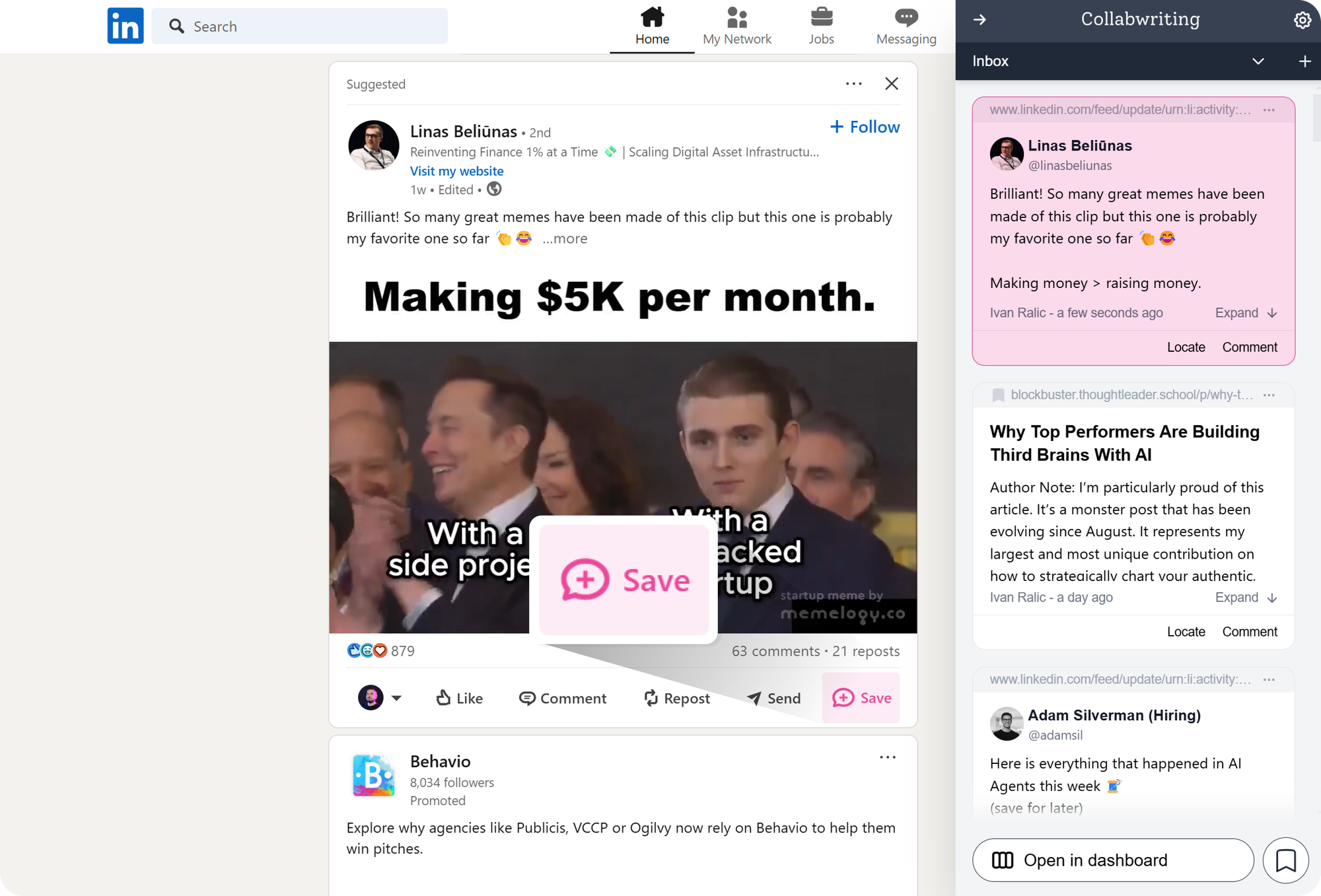
Organizing research
With Google Sheets: One giant sheet, cluttered tabs, messy columns. Everyone structures it differently, and soon you forget where things are.
❌ Hard to maintain
❌ No clear structure
❌ Doesn’t scale well with growing research
With Collabwriting: Group insights into clusters like "Competitors" "Customer Quotes" or "Blog Ideas". Each cluster keeps your research focused and easy to navigate.
✔️ Clean, topic-based organization
✔️ Easy to filter, tag, and search
✔️ Designed to grow with your projects
Retaining context
With Google Sheets: You glance at a link and think, “Why did I save this?” No notes, no explanation - just noise.
❌ No context around saved links
❌ Hard to remember why something mattered
❌ Wastes time reopening links
With Collabwriting every snippet shows you:
- The exact text you saved
- Your personal note or insight
- The original source, right there
✔️ Instant clarity every time
✔️ No guessing what it meant
✔️ Context that sticks with your research
Collaborating with others
With GoogleSheets: You send the spreadsheet, then spend hours explaining what matters and chasing feedback. Everyone sees the whole doc, even if they don’t need to.
❌ Hard to guide people to the right parts
❌ Feedback gets lost in endless cells
❌ No control over what others see or do
With Collabwriting: Share one link (we call it cowrite link!) to exactly the insights your team needs, and control permissions so they can view, comment, or edit as you choose. (Or add your collaborators via Email)
They can read, leave feedback, or add their own highlights, all in real time.
✔️ Lightweight collaboration
✔️ Faster feedback
✔️ Share only what’s relevant, with full control over access rights
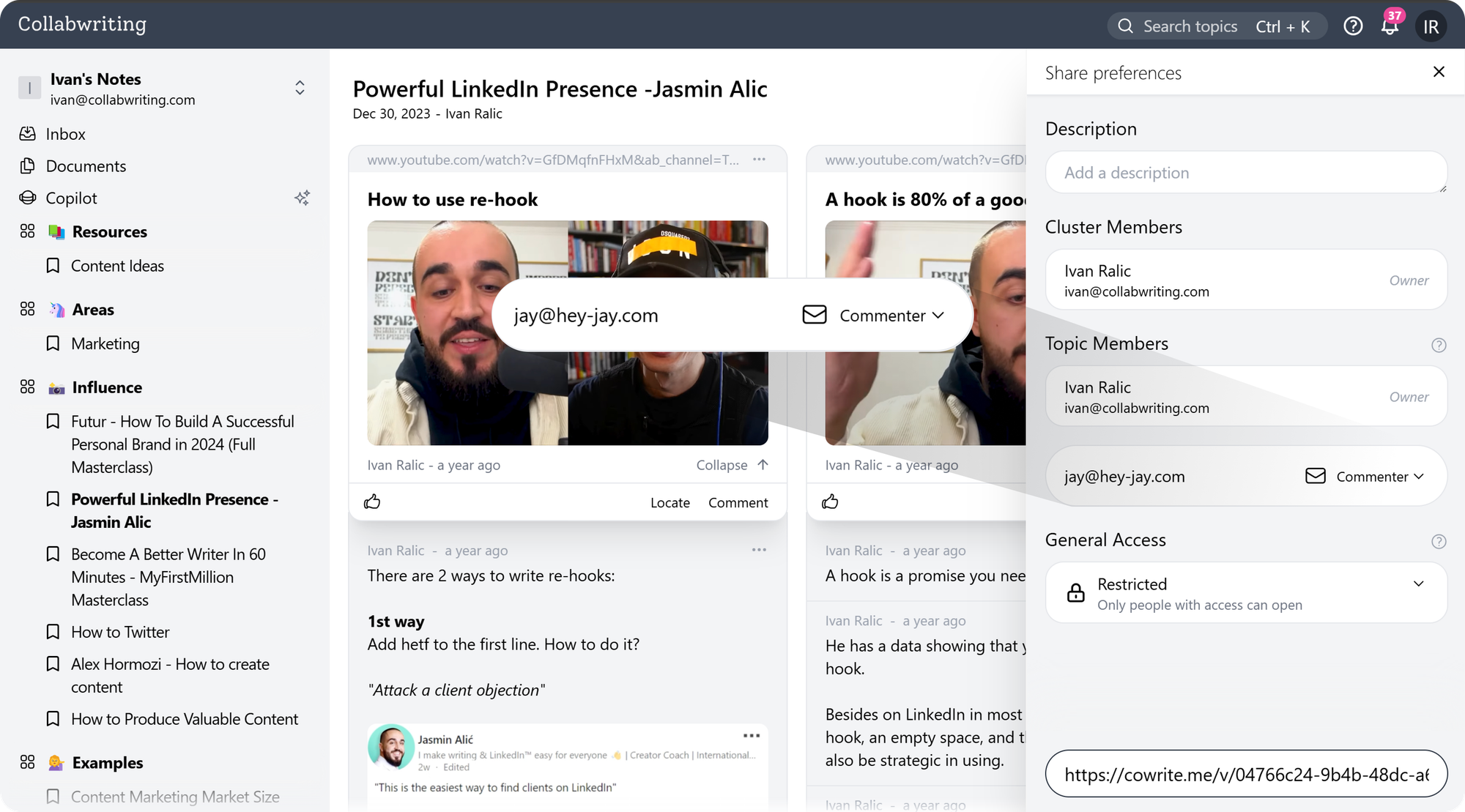
Collabwriting doesn’t replace your research process - it makes it easier.
You still explore, read, and think. But instead of saving entire articles or PDFs, you capture only what matters: a key sentence, a stat, an idea.
Each insight is saved with the source, your comment, and topic, so you always know why it mattered.
And when it’s time to collaborate, you don’t have to share the whole document. You just share the relevant insights. Which means:
🔍 Simple collection
📍 Easy to locate later
🤝 Context-driven collaboration
It’s not a new way to do research - it’s just a better way to use what you’ve already found.
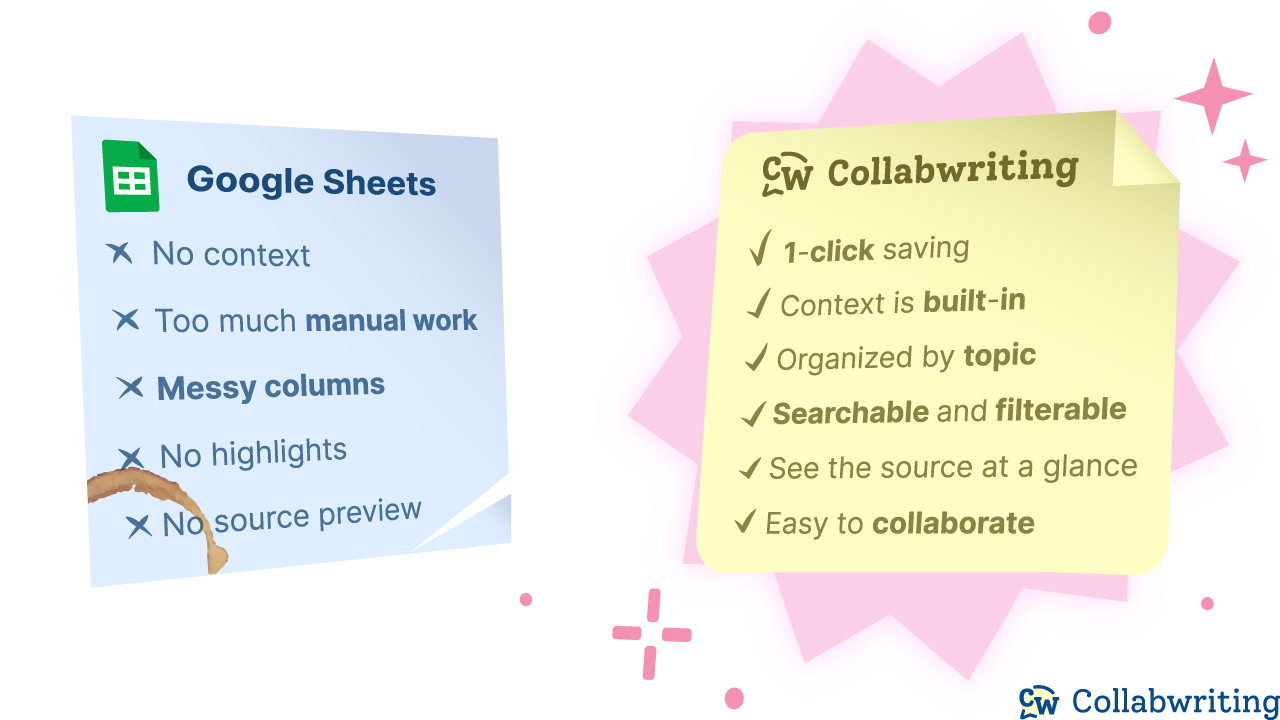
Forget Spreadsheets - You Need More Than Just a Table
If content is your craft, your research process should work for you, not slow you down.
Losing ideas, context, or precious time because of clunky tools isn’t an option.
Spreadsheets might have helped in the beginning, but they weren’t built for the way you actually think and work today.
It’s time to switch to a tool that keeps your insights organized, your team on the same page, and your research process simple from start to finish.
👉 Give Collabwriting a try for free and see how easy research can be when it’s built for the way you think.

Collabwriting - Shareable Notes on Web Pages and PDFs
Collabwriting allows you to gather all your online sources in one place. No more endless scrolling, no more lost insights, just simple, structured knowledge at your fingertips. Just highlight, save, and collaborate with anyone on any content you find online.
FAQ
Why do content marketers still use spreadsheets for research?
Because it’s the path of least resistance. Everyone knows how to use them, they’re flexible, and they seem good enough. But over time, spreadsheets become cluttered, confusing, and hard to scale, especially when real context and collaboration are needed.
What’s the biggest problem with using spreadsheets for content research?
They weren’t built for it. Spreadsheets are great for numbers and lists, but content research is about ideas, context, and insights. With spreadsheets, you end up with a wall of links and vague notes that don’t help you remember why you saved something in the first place.
What does “losing context” mean?
It’s that moment when you look at a saved link and think, ''Why did I save this again?'' You might have added a title or a note like ''good point'', but without the actual quote or your initial thought, the value is lost. Context is what makes research useful later, and spreadsheets rarely help you keep it.
Why doesn’t spreadsheet-based research scale with teams?
As your research grows, so does the mess: more tabs, inconsistent formatting, unclear notes. Everyone does it differently, so finding the right info becomes harder over time. What starts as ''organized'' quickly becomes unmanageable.
What makes collaboration difficult in spreadsheets?
You have to explain everything - what to look at, what matters, where to start. Feedback gets buried in comment cells, and the team sees way more than they need. It’s inefficient and often leads to confusion instead of clarity.
How is Collabwriting different?
Collabwriting is built for content research. You can:
- Highlight just the key insight
- Add context while it’s still fresh
- Group ideas by topic
- Share only what matters with your team
- Keep everything searchable and organized
No more giant documents or guesswork - just insights that stick.
Does Collabwriting replace spreadsheets completely?
Not entirely. Spreadsheets are still great for things like budgets, calendars, or keyword lists. But when it comes to collecting, organizing, and using research insights? Collabwriting is simply a better fit.
How does sharing work with Collabwriting?
You can generate a cowrite link that shows only the relevant insights, complete with context and original sources. You control access, so collaborators can view, comment, or contribute without needing to wade through everything else.
Is it hard to switch from spreadsheets to Collabwriting?
Not at all. You don’t have to change your process - just improve how you capture and organize insights. Once you try it, you’ll wonder how you ever managed with a spreadsheet.



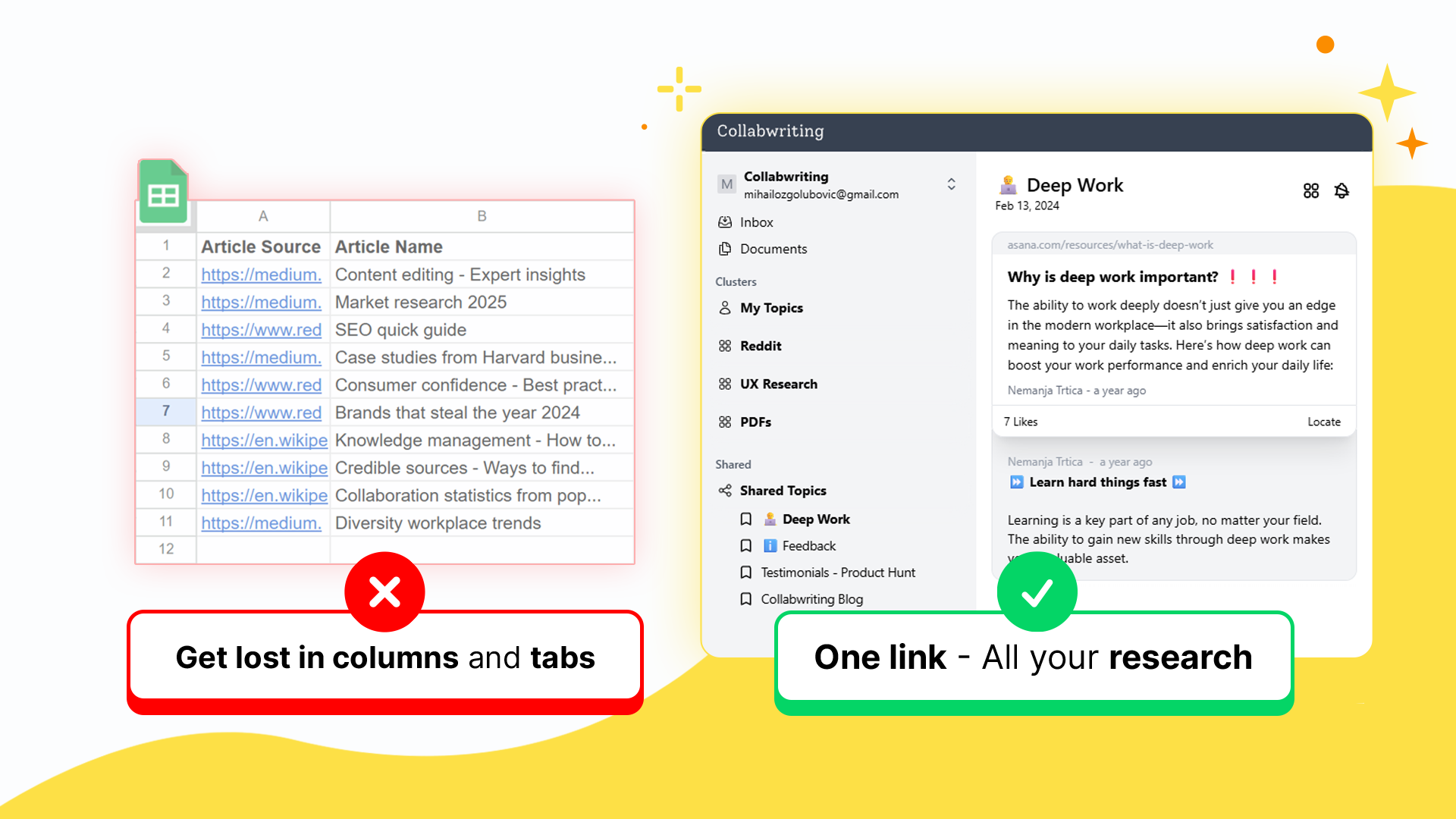

![5 Tools Marketers Use to Organize Research - Compared [2025]](/content/images/2025/11/cover-4-1.png)

![Build Credibility in Research: Smart Way to Verify Information and Track Sources Easily [2025]](/content/images/2025/10/covers-for-blog--7--1.png)
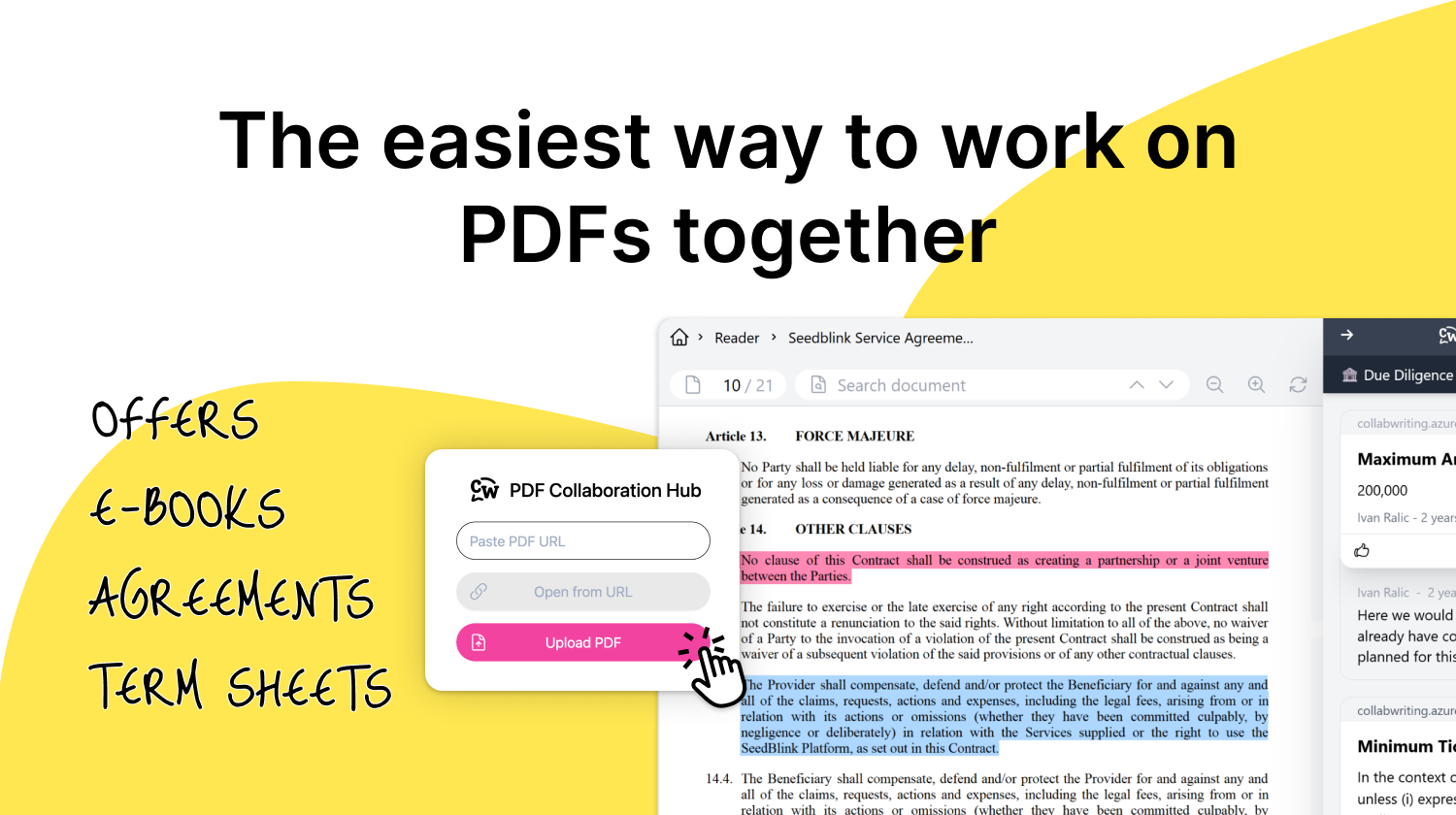
![How Marketers Can Turn LinkedIn Content into Collaborative Research [2025]](/content/images/2025/10/covers-for-blog--8-.png)
![Best Readwise Alternative for Personal & Team Research [2025]](/content/images/2025/09/Frame-814--3-.png)
